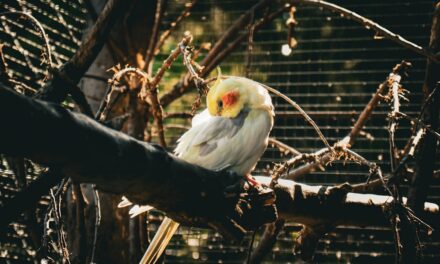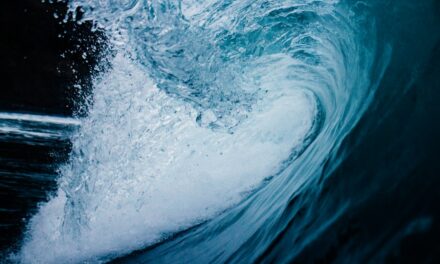In the realm of contemporary art, mixed media has emerged as a dynamic and versatile form of expression, allowing artists to blend various materials and techniques to create compelling visual narratives. Among the myriad elements that can be incorporated into mixed media works, found text and typography stand out as particularly potent tools. Found text refers to words or phrases that are sourced from existing materials, such as newspapers, books, or advertisements, while typography encompasses the art of arranging type in a visually appealing manner.
Together, these elements can transform a piece of art, imbuing it with layers of meaning and inviting viewers to engage with the work on multiple levels. The integration of found text and typography into mixed media art not only enhances the aesthetic appeal of a piece but also serves as a commentary on language, culture, and society. By repurposing existing texts, artists can challenge conventional narratives and provoke thought about the context in which these words were originally presented.
Typography, on the other hand, allows for a creative exploration of form and structure, as artists manipulate typefaces and layouts to convey emotion and intention. This interplay between text and visual elements creates a rich tapestry of meaning that resonates with audiences, making mixed media art a powerful vehicle for communication.
Summary
- Found text and typography play a crucial role in mixed media art, adding depth and meaning to the artwork.
- Exploring the use of found text in mixed media art allows artists to incorporate elements of storytelling and history into their work.
- Incorporating typography in mixed media art can create visual interest and enhance the overall composition of the artwork.
- Techniques for incorporating found text and typography in mixed media art include collage, stenciling, and hand-lettering.
- Finding inspiration for found text and typography in mixed media art can come from vintage books, newspapers, signage, and personal journals.
Exploring the Use of Found Text in Mixed Media Art
Found text has a long-standing history in the art world, with artists such as Marcel Duchamp and Robert Rauschenberg paving the way for its incorporation into visual works. The use of found text allows artists to tap into the collective consciousness, drawing upon familiar phrases or snippets of dialogue that evoke shared experiences. This practice not only enriches the narrative of the artwork but also invites viewers to reflect on their own interpretations of the text.
For instance, an artist might utilise a line from a poem or a headline from a newspaper to evoke emotions related to love, loss, or social issues, thereby creating a dialogue between the artwork and its audience.
This is particularly evident in the works of contemporary artists who address themes such as identity, politics, and consumerism through their use of found text. The act of juxtaposing disparate texts within a single artwork can create a sense of tension or harmony, prompting viewers to consider the relationships between the words and the visual elements surrounding them.
Incorporating Typography in Mixed Media Art
Typography plays an equally significant role in mixed media art, offering artists a way to explore the visual potential of language. The choice of typeface, size, colour, and arrangement can dramatically alter the perception of a piece, influencing how viewers engage with the text. Artists often experiment with different typographic styles to evoke specific emotions or convey particular messages.
For example, bold sans-serif fonts may suggest modernity and strength, while delicate serif fonts might evoke nostalgia or elegance. Incorporating typography into mixed media art also allows for an exploration of rhythm and movement within a composition. The placement of text can guide the viewer’s eye across the artwork, creating a visual flow that enhances the overall experience.
Artists may choose to layer text over images or integrate it seamlessly into the background, blurring the lines between word and image. This interplay not only enriches the visual complexity of the piece but also encourages viewers to engage with both the textual and visual elements simultaneously.
Techniques for Incorporating Found Text and Typography in Mixed Media Art
There are numerous techniques that artists can employ when incorporating found text and typography into their mixed media works. One popular method is collage, where artists cut out letters or phrases from various sources and arrange them on a canvas or other substrate. This technique allows for a tactile engagement with the materials, as artists physically manipulate the text to create their desired composition.
Additionally, collage can introduce an element of chance, as the serendipitous combination of texts can lead to unexpected meanings. Another effective technique is layering, where artists build up multiple layers of text and imagery to create depth within their work. This approach not only adds visual interest but also allows for the exploration of transparency and opacity in both text and image.
Artists may choose to use translucent materials such as tracing paper or acetate to overlay text onto images, creating a dialogue between the two elements. Furthermore, digital tools can be employed to manipulate typography and integrate it seamlessly into mixed media compositions. Software programs allow artists to experiment with font styles, sizes, and arrangements before committing to physical materials.
Finding Inspiration for Found Text and Typography in Mixed Media Art
Inspiration for found text and typography can be drawn from a multitude of sources. Everyday life offers an abundance of potential material; artists may find intriguing phrases in magazines, advertisements, or even social media posts. The act of collecting snippets of language can become an artistic practice in itself, encouraging artists to remain attuned to their surroundings and the messages they encounter daily.
Keeping a journal or scrapbook dedicated to found text can serve as a valuable resource for future projects. Additionally, literature and poetry provide rich veins of inspiration for artists seeking to incorporate text into their work. Quotations from favourite authors or lines from beloved poems can resonate deeply with an artist’s personal experiences and themes they wish to explore.
By selecting texts that hold significance for them, artists can imbue their work with authenticity and emotional depth. Furthermore, engaging with other art forms—such as music or film—can also spark ideas for found text and typography, as lyrics or dialogue may inspire new artistic directions.
Tips for Choosing and Using Found Text and Typography in Mixed Media Art
When selecting found text for mixed media art, it is essential to consider both the content and context of the words being used. Artists should ask themselves what message they wish to convey through their choice of text and how it relates to the overall theme of their work. It is often beneficial to choose phrases that resonate on multiple levels—those that can be interpreted in various ways depending on the viewer’s perspective.
In terms of typography, artists should experiment with different fonts and styles to find those that best complement their chosen texts. The visual impact of typography can significantly influence how viewers perceive the message being conveyed; therefore, careful consideration should be given to font selection. Additionally, artists should not shy away from mixing different typefaces within a single piece; this can create visual contrast and enhance the overall dynamism of the artwork.
Examples of Mixed Media Art Using Found Text and Typography
Numerous contemporary artists have successfully integrated found text and typography into their mixed media works, each bringing their unique perspective to this practice. For instance, artist Barbara Kruger is renowned for her bold use of typography combined with striking imagery. Her works often feature provocative statements that challenge societal norms and consumer culture, utilising found text in a way that compels viewers to confront uncomfortable truths.
Another notable example is artist Jenny Holzer, whose work frequently employs language as a central element. Holzer’s installations often feature scrolling LED displays or large-scale projections that present thought-provoking phrases drawn from various sources. By placing these texts in public spaces, she invites audiences to engage with her work in everyday contexts, blurring the boundaries between art and life.
The Impact of Found Text and Typography in Mixed Media Art
The incorporation of found text and typography into mixed media art has proven to be a transformative practice that enriches both the aesthetic quality and conceptual depth of artworks. By repurposing existing language and exploring typographic forms, artists can create compelling narratives that resonate with viewers on multiple levels. This interplay between word and image not only enhances visual engagement but also encourages critical reflection on language’s role in shaping our understanding of culture and society.
As mixed media continues to evolve as an artistic practice, the potential for innovation in the use of found text and typography remains boundless. Artists are continually discovering new ways to challenge conventions and push boundaries through their creative explorations. Ultimately, found text and typography serve as powerful tools for communication within mixed media art, allowing artists to convey complex ideas while inviting audiences into an ongoing dialogue about meaning and interpretation.
If you are interested in exploring the concept of artistic synergy, you may find this article to be a fascinating read. It delves into the idea of combining different artistic elements to create a cohesive and impactful piece of art. This approach can be particularly relevant when using found text and typography in mixed media art, as it allows for a harmonious blend of visual and textual elements. By understanding the principles of artistic synergy, artists can enhance the overall impact of their work and create more engaging and thought-provoking pieces.


